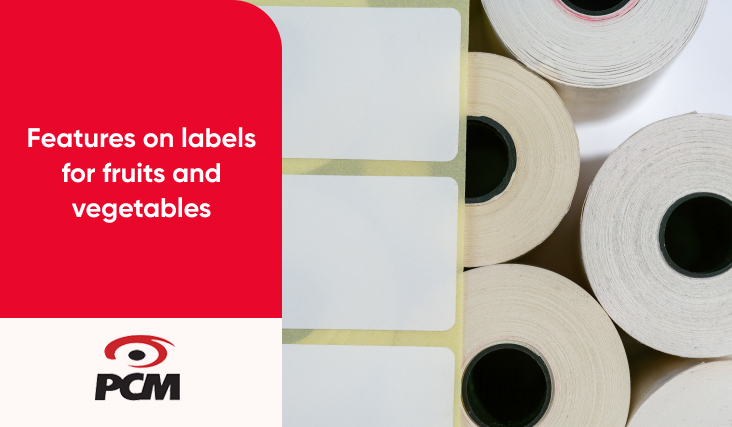- Labels
- Features on labels for fruits and vegetables
Features on labels for fruits and vegetables

If you've done your weekly grocery shopping at a supermarket you may have noticed labels on everything that is available. Like every product sold in stores, labels make it easy to take inventory and speed up the checkout process when you go to the cash register. But there's more behind produce labels than just that.
Many people think it only benefits the store and does nothing for the consumer, which is wrong. Knowing what the label tells you about the produce could change your mind about which produce to carry.
Article content:
What do produce labels do?
The first digit is the most relevant
Traditional farming
Modified foods
Are labels for fruits and vegetables regulated?
No more PLU codes?
It's time to label
What do produce labels do?
On fruit and vegetable labels, what helps the consumer the most is the PLU, which stands for Price Lookup. This is a 4-to-5-digit code that has a unique value for each product according to characteristics such as:
- Form of cultivation
- Area where it was obtained
- Color
- Shape
- Size
- Weight
In this way, just with the PLU, you can obtain detailed information about your product, for example, if an apple is of U.S. or Mexican origin, if it is completely organic or if it was somehow genetically modified, among other data.
A pear grown in a certain region will have the same PLU up to a certain weight. When it exceeds it, it will be another PLU. If it is a pear with the same weight but was grown in another area, the code changes again.
The first digit is the most relevant
There are too many PLU codes to try to learn them all. Likewise, at a glance you can know everything you need to know about a fruit or vegetable. Or well, almost everything.
One thing that affects most people is knowing how the food they are eating was grown - did they use chemicals on it, or is it completely organic? This is what the first PLU number tells us.
Traditional farming
This is the most popular form used on farms. The food is completely natural, but pesticides are used during cultivation to protect it.
These start with a 0 on the labels for fruits and vegetables. It is common in practice for this to be omitted, in which case we will go by the number of digits. If it has only 4, then it is a traditional food.
Modified foods
These are the ones that most people prefer to avoid. All product codes in this class begin with an 100% organic production
No pesticides or other chemicals are used, everything is natural. Labels start with a 9. To certify that a crop is organic, it must pass certain tests and be certified by food agencies. All this means that the products in this category are the most expensive of the 3 categories. For example, a genetically altered banana will have the code #84011, a traditionally produced banana #4011 and an organic banana #94011.
Are labels for fruits and vegetables regulated?
The body that assigns the codes is the International Federation for Produce Standards (IFPS). Originally, their idea was to make life easier for chain stores to keep better control of their products, but over time, they adapted and also gave the consumer an opportunity to obtain information. In their official site they have a search engine that by entering the PLU code, will give you the product information. You can also search according to its characteristics, and it will give you the PLU that corresponds to that product.
No legal body ensures that all merchandise is properly labeled. Many times, labels for fruits and vegetables are not used because knowing their characteristics, some people would not buy them. And this is especially true when it comes to genetically modified foods.
This makes it quite difficult to find foods that are organic. Therefore, it is best to find chains that have gone through the certification process. Price will also be a red flag, as it should be above average for the same product.
No more PLU codes?
The main drawback of PLU codes on fruit and vegetable labels is the small number of farmers who correctly label genetically modified products. This leads to a large amount of numbers being wasted because they are not used in practice.
In one of its most recent proposals, IFPS intends to stop using the prefix 8 for this class of products. Nowadays it has not been implemented, but it is an idea that is still in the air in case the numbers run out.
As long as the world continues to connect the way it is going and food categories become more and more specific, the above will not be long in coming. Oranges grown in the United States are no longer the same as oranges grown in Mexico, Colombia, or Panama.
And to talk about countries is not even saying much. It depends on the size of the country, but on average there are at least 10 variations for each fruit. If each of those countries decided to export their goods, they would flood the market and wipe out the available fruit and vegetable labels.
It's time to label
Putting on fruit and vegetable labels is not something you can do on your own. In addition to the work involved, you do need a licensed agent to do the job. Make sure you have a reliable industry that will guarantee a job well done.
At PCM we have more than 26 years of experience in the manufacture and conversion of paper products. Contact our consultants to learn about all the solutions we have available for your business.
Labels /



 Boxes
Boxes Corrugated
Corrugated Labels
Labels Ribbons
Ribbons Recycler
Recycler Plastics
Plastics